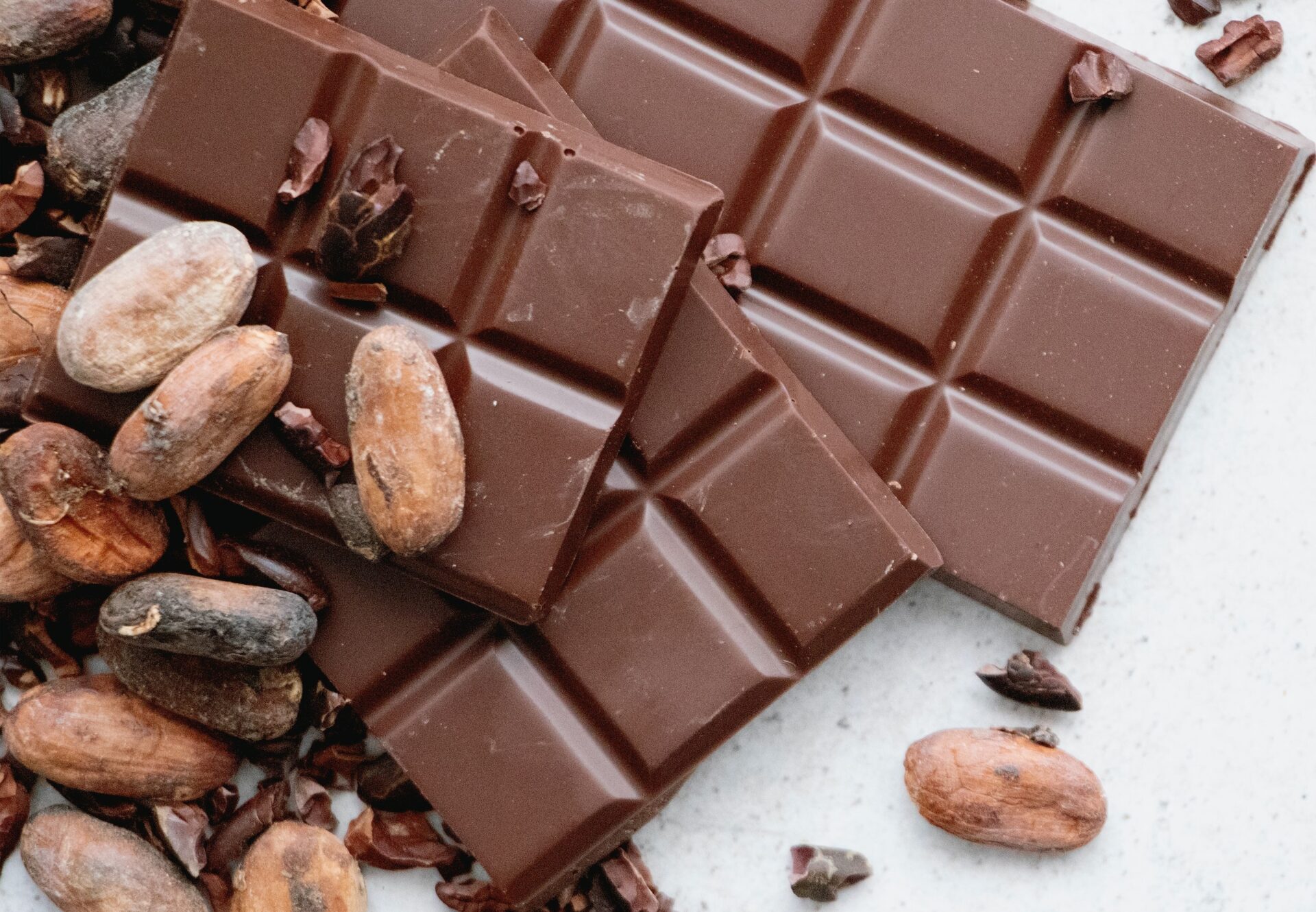Anecdotally, we’ve all heard for years about chocolate’s impact on one’s mood. I even get happy just buying artisan chocolate bars.
Still, food-centric anecdotes can be misleading. Monosodium glutamate (MSG) is a perfect example of how the headlines and anecdotes got way ahead of the science. MSG is really just old-school-speak for the term “umami” but if you want the facts, check out MSGdish. (Full disclosure, I also write for that site.)
The Triad: A Cocoa-Gut-Happy Mood Connection

Photo by Kier In Sight on Unsplash
A recent study found a relationship between high cocoa content and improved mood but it also found positive changes in the gut microbiome – a complex environment in your GI tract that has zillions of bacteria. Simplified, the study suggested a plausible mechanism for the food-mood connection.
If you’re not used to studying research papers in science journals, they’re not light reading. Below is my “digested” description of the study:
- A randomized controlled trial, with 3 groups:
- 70% cocoa group
- 85% cocoa group
- Control group: no chocolate
The 70% and 85% groups were assigned to eat 10 grams of their chocolate 3 times daily, for 3 weeks.
At baseline and 3 weeks later, right after the study completed, these measurements were taken:
- Body composition analyses.
- Dietary analyses from 3-day food records.
- Standardized tests for depression and “negative affect” (a measure of emotional distress).
- Fecal samples, so that specific amounts and species of bacteria could be analyzed.
What’d They Find?
 The 70% group showed trends but no significant differences from the controls.
The 70% group showed trends but no significant differences from the controls.
The 85% cocoa group had dramatic results:
- They didn’t have more happy moods, but they were “less unhappy”, e.g. they had fewer “negative emotional states” than the other two groups.
- The 85% group had significantly greater number and more diverse composition of the gut microbiome in the 85% group compared to control group or 70% group.
- Significantly greater numbers of two species of “good” bacteria.
- The authors concluded that the changes in the 85% cocoa groups were a result of a mediating effect of the 85% cocoa consumption.

Photo by Johan Godínez on Unsplash
Why I like this study
- It’s a well-done randomized controlled trial, the gold-standard for showing cause-and-effect. It also takes a deep dive — literally! Mood and fecal samples were measured and analyzed before and after the intervention, to see how chocolate may impact the connection between the gut and the brain (the “gut-brain axis”).
- The study used a control group, and two doses of chocolate, to see if changes might be “dose related”.
- Measurable and positive results on mood were demonstrated in the 85% group. Cocoa is known to be loaded with polyphenols with antioxidant activity, but it’s the action of the gut bacteria that enhances their bioavailability. The results suggested that dark chocolate had prebiotic effects.
- It still isn’t clear if the polyphenols are what impacts mood, but this study does justify further exploration of this avenue.
- The study names the chocolate used! Many studies don’t. The study used 70% and 85% Weinrich 1895 Fine Dark Chocolate. It’s available on the open market, so not something produced for this study only. I like that, as it makes the results more applicable to a real-world setting.
“The Fine Print”
No study provides complete answers, and this one has limitations. Among them:
- It only lasted 3 weeks, perhaps not long enough for the gut to fully respond to cocoa consumption. A study lasting 3 months may show even more dramatic results, possibly an additional impact in the 70% cocoa group.
- The study used a realistic 30-gram dose, with 10 grams eaten 3 times daily. Fair enough, but it’s not known if a somewhat larger dose of the 70% and 85% chocolate would produce different results or not.
- Both cocoa groups ate 30 grams per day, so the 85% group ate more actual cocoa solids and polyphenols. The 70% group would have had to eat more chocolate to get the same amount of polyphenols. Do results depend on the total amount of polyphenols eaten, or just the gram dose of chocolate? This study wasn’t designed to tell us that.
- The study wasn’t blinded, so subjects could tell by the taste if they had the stronger chocolate.
- There can be a self-report bias on the part of participants. That would be true for any study that used these same mood measurement tools however.
Overall, the “ounce-a-day” I insist on eating (OK, sometimes a tad more) might help put me, or keep me, in a good mood. I do enjoy a good 85% bar, but I’m happy to do the 70% if that means I get to eat a little more of it to give me as many polyphenols!






